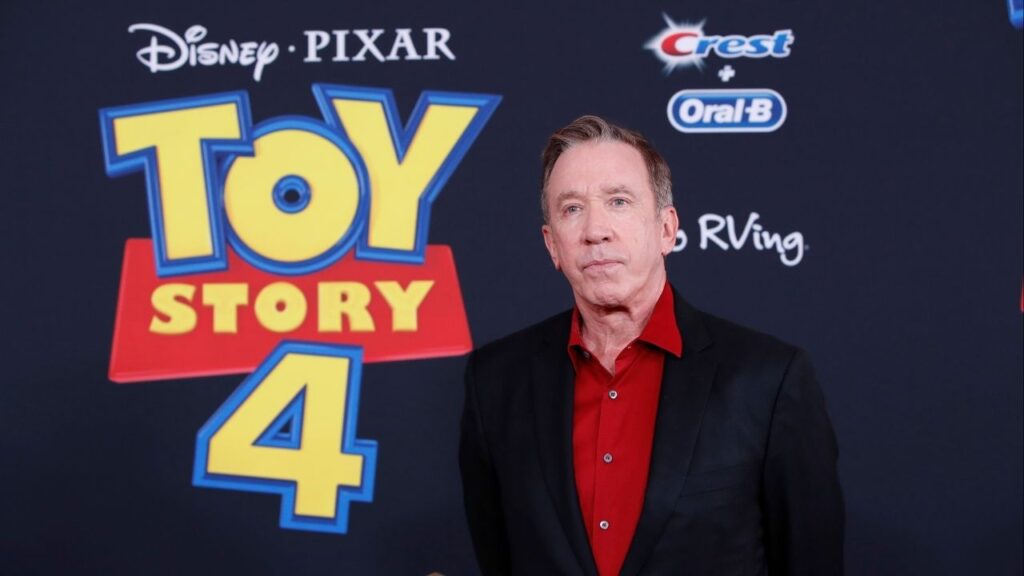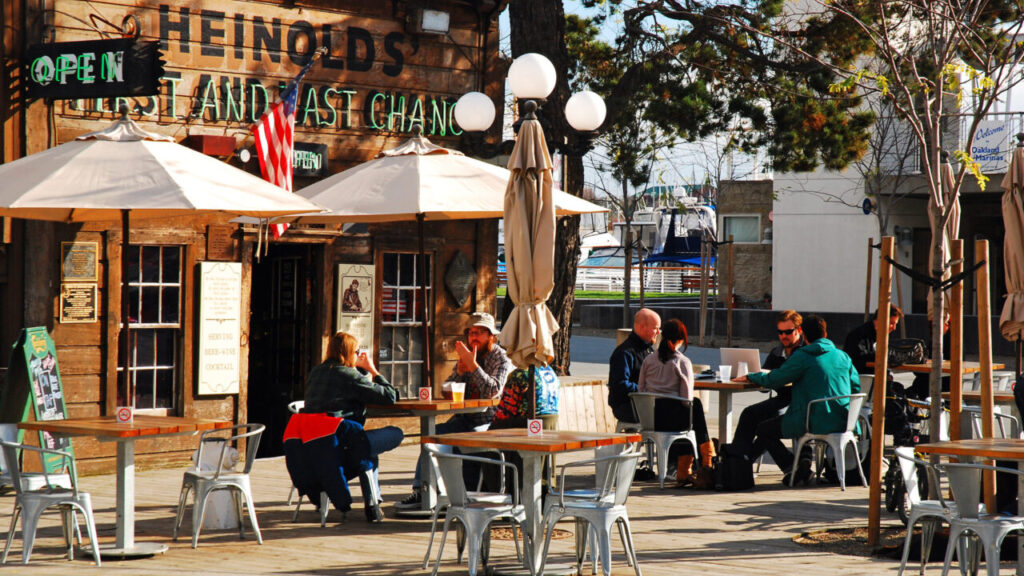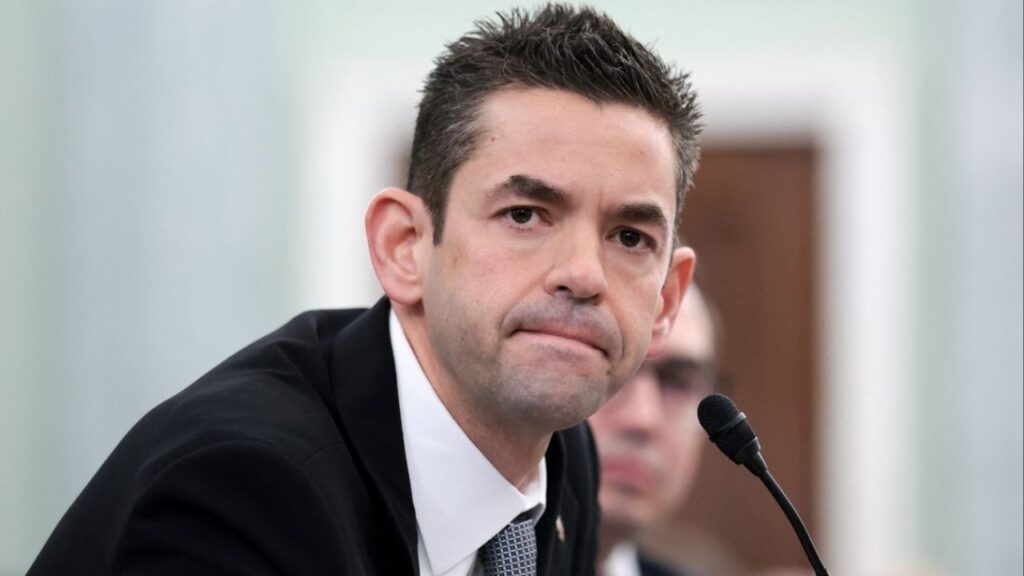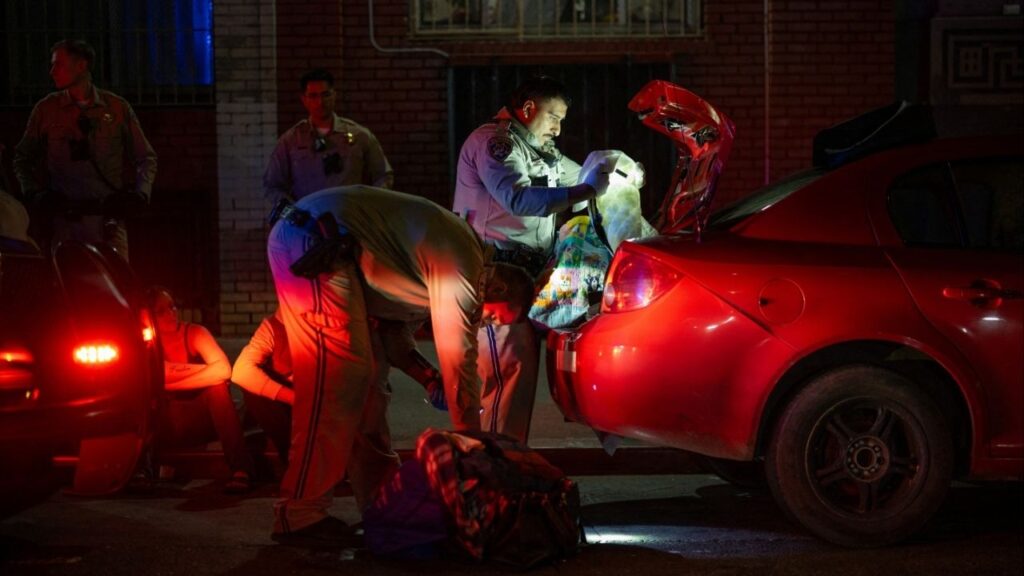An Israeli soldier walks out of a Hamas tunnel, during an escorted tour by the Israeli military for journalists, in the central Gaza Strip, Dec. 15, 2023. Hezbollah also has a tunnel network in Lebanon. (Tamir Kalifa/The New York Times)

- Israel's airstrikes killed Hezbollah's leader, Hassan Nasrallah, near Beirut, leaving a significant leadership gap in the organization.
- Despite its powerful arsenal, Hezbollah’s retaliation has been limited, raising questions about the group’s ability to respond effectively without Nasrallah.
- U.S. officials warn that a ground invasion targeting Hezbollah’s strategic missile stockpiles in Lebanon could cause more devastation than seen in Gaza.
Share
|
Getting your Trinity Audio player ready...
|
For more than three decades, he was the face and brain of Hezbollah.
Hassan Nasrallah, whom Israel killed Friday in heavy airstrikes on his organization’s underground headquarters near Beirut, plotted and greenlit attacks and negotiated political alliances. He served as a charismatic unifying figure for the group’s members and followers, convincing them in frequent speeches of the righteousness of their anti-Israel struggle and reassuring them that victory was on the way.
And now he is gone, a blow to the organization so deep that it raises crucial questions about how and whether its remaining forces can strike back at Israel.
Related Story: Hezbollah Confirms Its Leader Hassan Nasrallah Was Killed in an Israeli ...
Israel Considered Nasrallah the Figure Behind Their Threats
Israel long considered Nasrallah not only a terrorist but also the wily figure behind one of its most immediate national security threats. Israeli officials have described their swift escalation against the group, which culminated in the killing of Nasrallah, as a type of shock-and-awe campaign, aimed at damaging Hezbollah so quickly that Israel would not need to send ground troops across its northern border to meet its objectives in debilitating the group.
With Nasrallah gone, there is no other Hezbollah leader to take his place who comes close to him in terms of stature and experience. Still, officials and analysts in the United States, while acknowledging his death as damaging the group, cautioned that counting Hezbollah out too quickly could be a mistake.
They pointed to the Gaza Strip, where Israel has fought for 11 months to break Hamas, a less sophisticated adversary, without achieving a decisive victory and with a tremendously high cost in human lives.
Related Story: Israel Says It Struck Hezbollah’s Headquarters in Huge Explosion That ...
Hamas’ extensive web of tunnels has bedeviled Israeli forces, and Hezbollah has its own networks. In fact, Hamas learned what it knows about tunnels from Hezbollah, American officials said. One official called Hezbollah Hamas’ “big brother.”
Israel has attacked Hezbollah’s tunnel network with artillery strikes but done little damage, U.S. officials say. Any larger effort would require heavier and more destructive bombs, likely followed by a ground campaign to clear fighters and weapons-launching sites, Dana Stroul, a former Pentagon deputy assistant secretary for the Middle East, said in an interview.
“Lebanon is a very different terrain,” said Stroul, now director of research at the Washington Institute for Near East Policy. “It’s mountainous, so it’s easier to disguise things. These guys have been drilling into rocks.”
Maj. Gen. Yaacov Ayish, a former commander of the Israeli military’s operations directorate, said Israel had previously found tunnels near the border that went 65 yards underground.
Destroying the tunnels in southern Lebanon, he said, was a “complicated” process that required large explosives.
Hezbollah Attacked Norther Israel Before the October Hamas Attack
Before the war in Gaza began last October and Iran-backed Hezbollah began attacking northern Israel in solidarity with its ally Hamas, Hezbollah was believed to be one of the best-equipped nonstate military forces in the world. The group had tens of thousands of fighters and an arsenal of more than 100,000 rockets and missiles, in addition to more sophisticated armaments, including drones, precision-guided missiles and anti-aircraft weapons.
But the group’s responses to Israel’s attacks over the last two weeks have fallen far short of Israel’s fears and Hezbollah’s threats. Hezbollah commandos have not rampaged through Israeli communities, and guided missiles have not damaged sensitive infrastructure. In addition to regular rocket barrages, the group has fired larger ballistic missiles that can reach deep inside Israel, but they have caused little damage, either because Israel’s defenses have shot them down or because they have fallen in open areas.
That suggests that Israel’s strikes on the group over the last 11 months — which accelerated this past week, killing more than 700 people, according to Lebanon’s health ministry — have diminished its abilities by blowing up stockpiles, killing and wounding fighters and disrupting communications.
Hezbollah does not disclose its military capacities and has not announced how many of its fighters have been killed in recent weeks. The Health Ministry does not distinguish between fighters and civilians.
Related Story: Netanyahu, at UN, Vows That Israel Will Keep ‘Degrading Hezbollah’ ...
No Other Leaders Like Nasrallah
Despite the sophistication of Hezbollah, which also runs schools and hospitals and provides social services to its supporters in Lebanon, it has cultivated no other leaders with Nasrallah’s stature.
Nasrallah took charge of the group when it was an underground guerrilla force fighting the Israeli occupation of southern Lebanon, which ended in 2000. The United States designated it a terrorist organization in 1997.
He led the organization as it formally entered Lebanese politics, winning seats in parliament and joining governing coalitions; fought Israel to a standstill in a hugely destructive war in 2006; and expanded into other countries, fighting in the Syrian civil war and training allied militias in Iraq and Yemen.
He had close relationships with top leaders of Hamas and other regional militias, as well as Ayatollah Ali Khamenei, Iran’s supreme leader.
Many in Lebanon have speculated that Hezbollah’s next leader could be Hashem Safieddine, a cousin of Nasrallah who appears to have survived Israel’s recent targeted killings. Nasrallah’s deputy, Sheikh Naim Qassim, also appears to still be alive.
U.S. officials warned that Israel would struggle to destroy the group in a ground invasion of Hezbollah’s home turf in southern Lebanon.
And should Prime Minister Benjamin Netanyahu of Israel decide to go after Hezbollah’s strategic arsenal — its repositories of ballistic missiles, many of them believed to be buried deep inside mountains in Lebanon — the resulting civilian harm could far outstrip the devastation in Gaza, the officials warned.
U.S. officials say the next moves by Hezbollah and Iran are far from certain. But the strike against Nasrallah is likely to prod the group to take more aggressive action than the limited strikes it has conducted so far.
Hezbollah has been preparing for its next major war with Israel since the last one ended in 2006 and is believed to be able to fire hundreds of rockets simultaneously at Israeli cities like Tel Aviv and Haifa, overwhelming Israel’s air defense systems, according to a senior Israeli security official, who spoke on the condition of anonymity to discuss Israeli assessments.
A handful of rockets breaking through the air defenses could cause immense damage, the official said.
–
This article originally appeared in The New York Times.
By Ben Hubbard and Helene Cooper/Tamir Kalifa
c. 2024 The New York Times Company
RELATED TOPICS:
Categories

Comedy Legend Tim Allen Announces Fresno Show

















